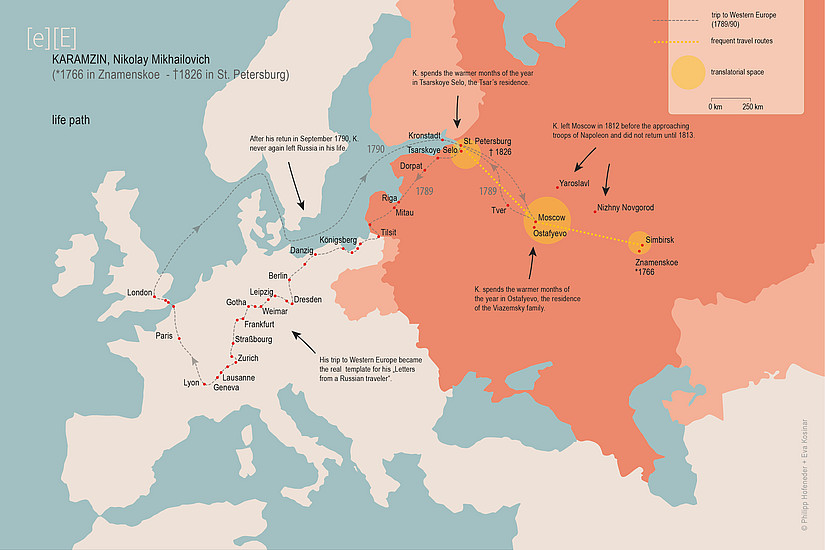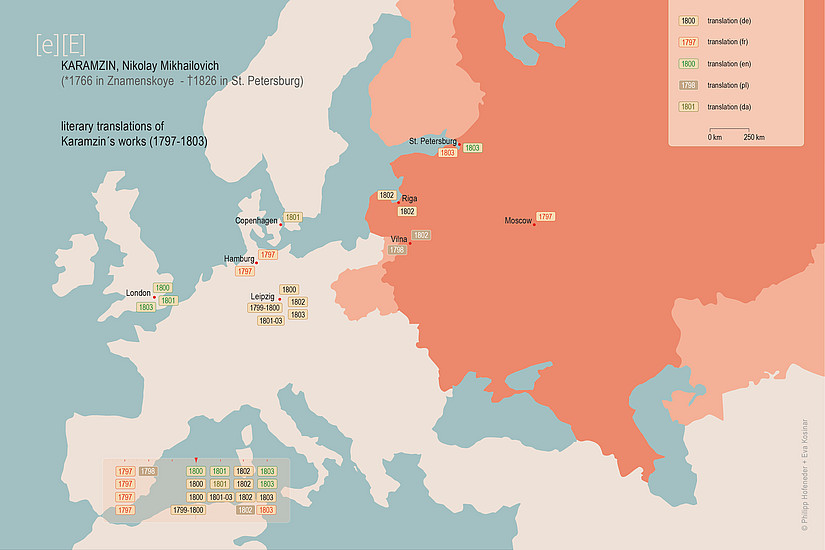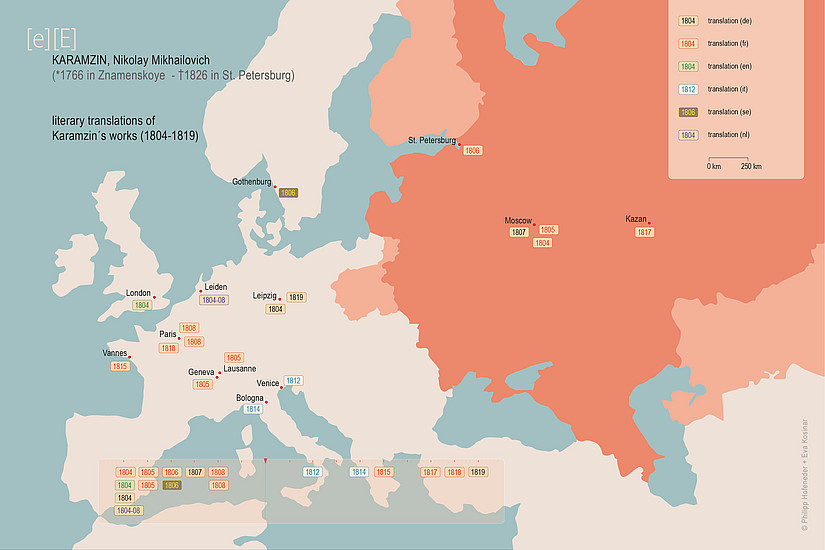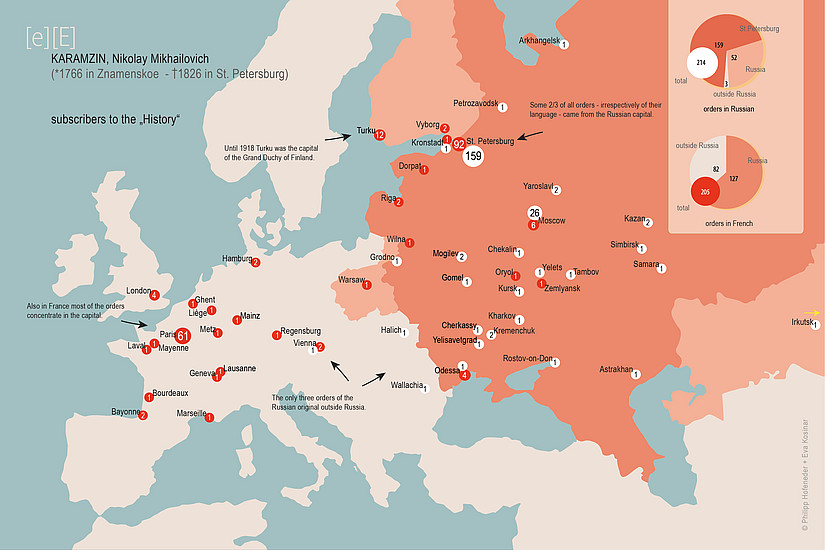translation flows
The statistical analysis of translations is one way of examining the history of translation. This quantitative approach is limited in several respects. Firstly, it focuses primarily on published translations as products of translator activity. Secondly, translation flows are usually structured along individual source and target languages, which are often equated with particular political entities. One way of productively overcoming this approach is to take a spatial approach ("spatial turn"). Here I focus not only on translations as physical objects, but also on the actors who make them possible: Authors, translators and finally readers. My aim is to reconstruct the mobility patterns of relevant actors and objects of translation. Where do they live and work? Where are these works published and where are the readers of these works located? Is the mobility of ideas automatically linked to the mobility of people or objects? In this respect, it is not important that a particular language or literature circulates, but how it spreads beyond its original place of origin.
Source: Hofeneder, Philipp (2023) "The circulation of knowledge vs the mobility of translation or how mobile are translators and translations?", in: Feinauer, Ilse, Marais, Amandas, Swart, Marius (ed.) Translation flows: Exploring networks of people, processes and products [= Benjamins Translation Library 163], Amsterdam 2023: John Benjamins, 23-42 [DOI:https://doi.org/10.1075/btl.163.02hof]



